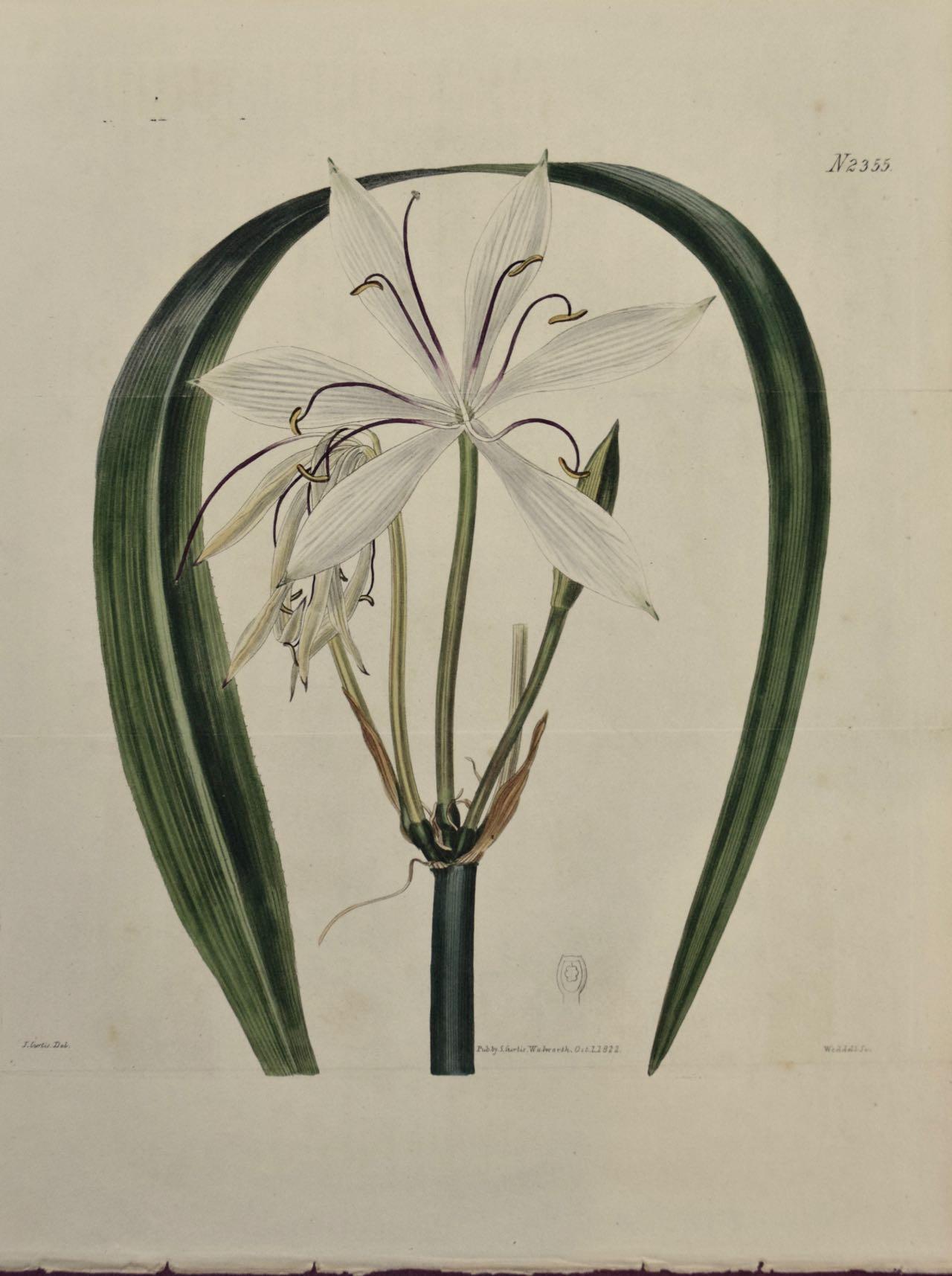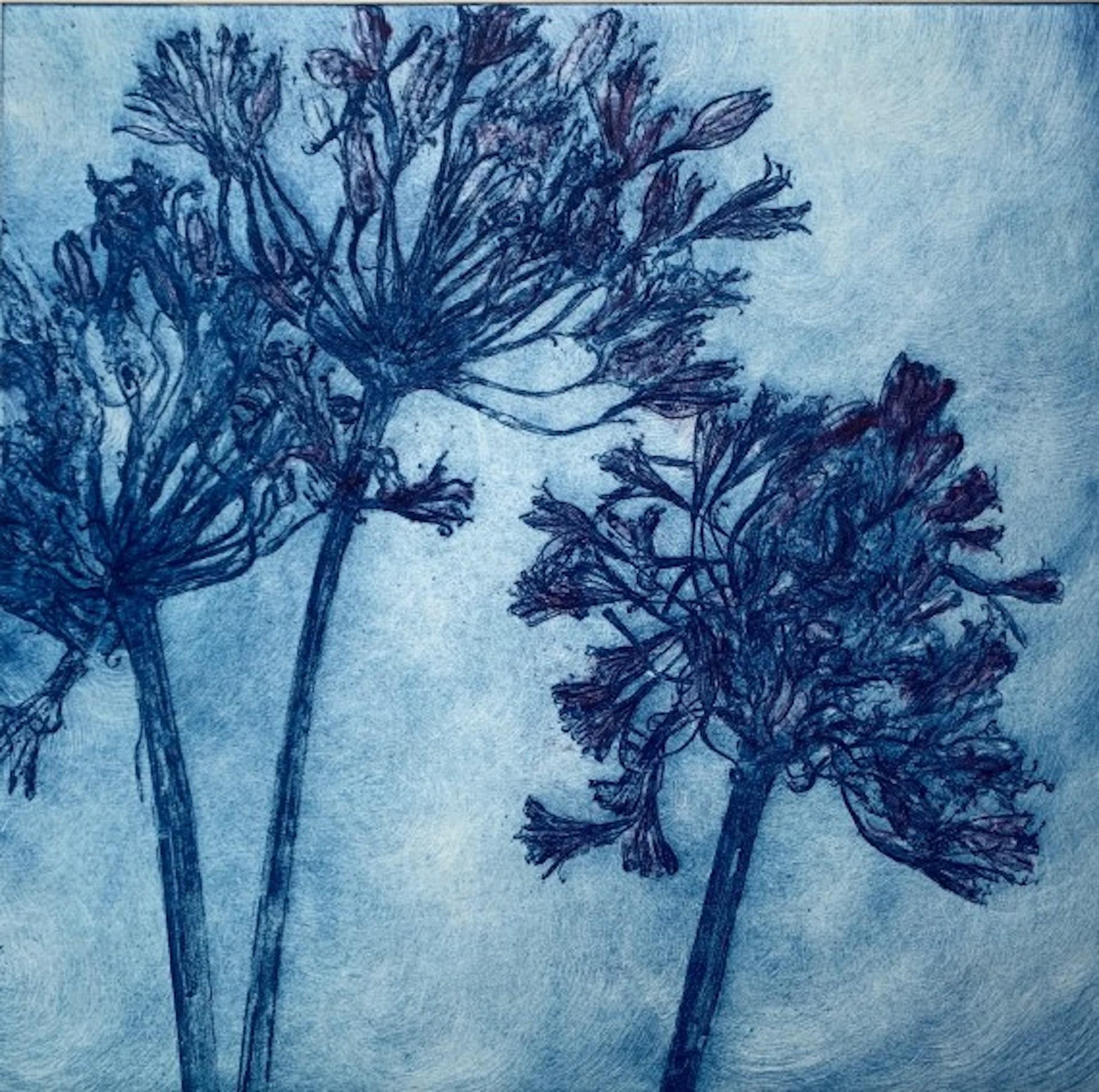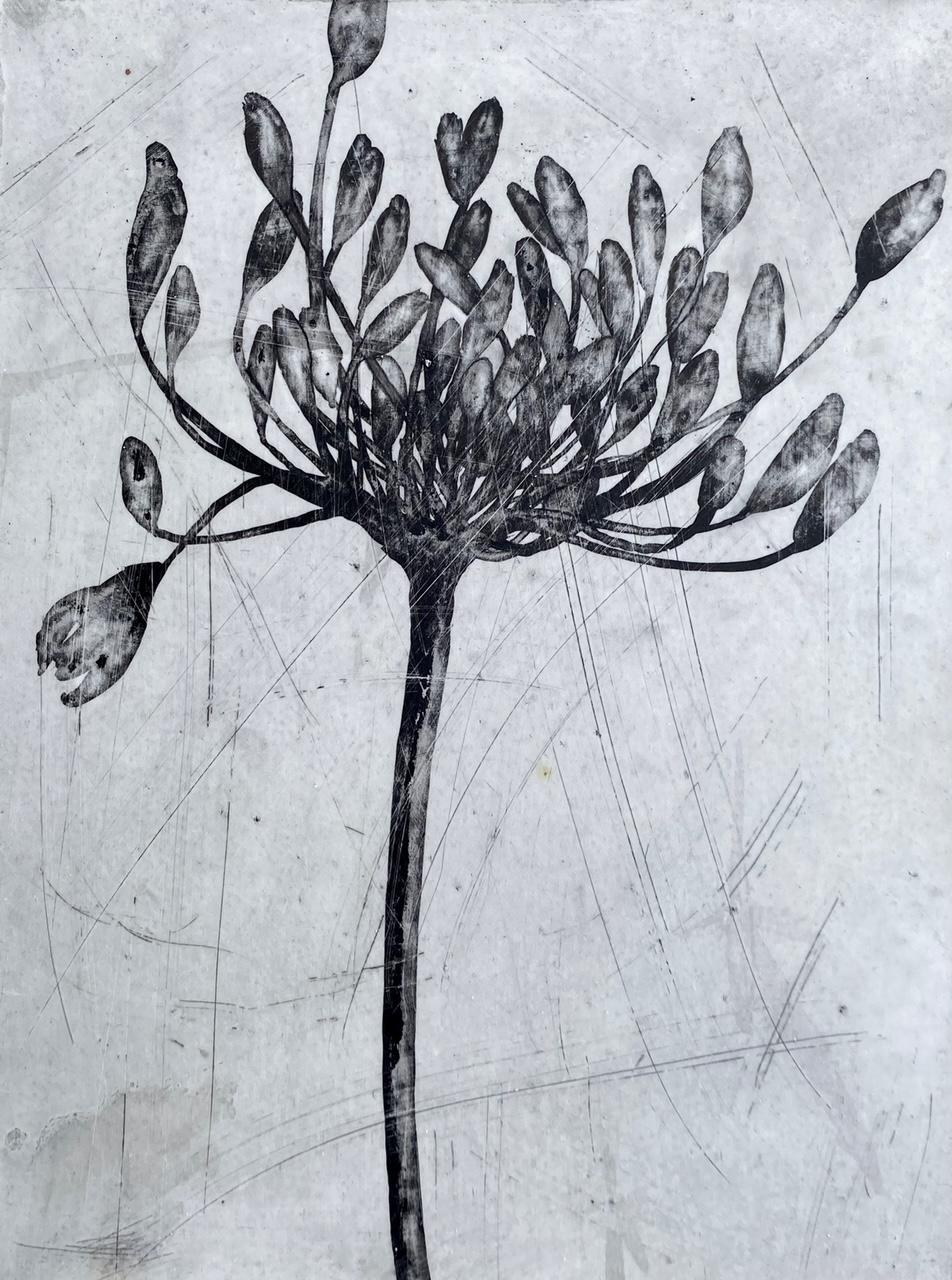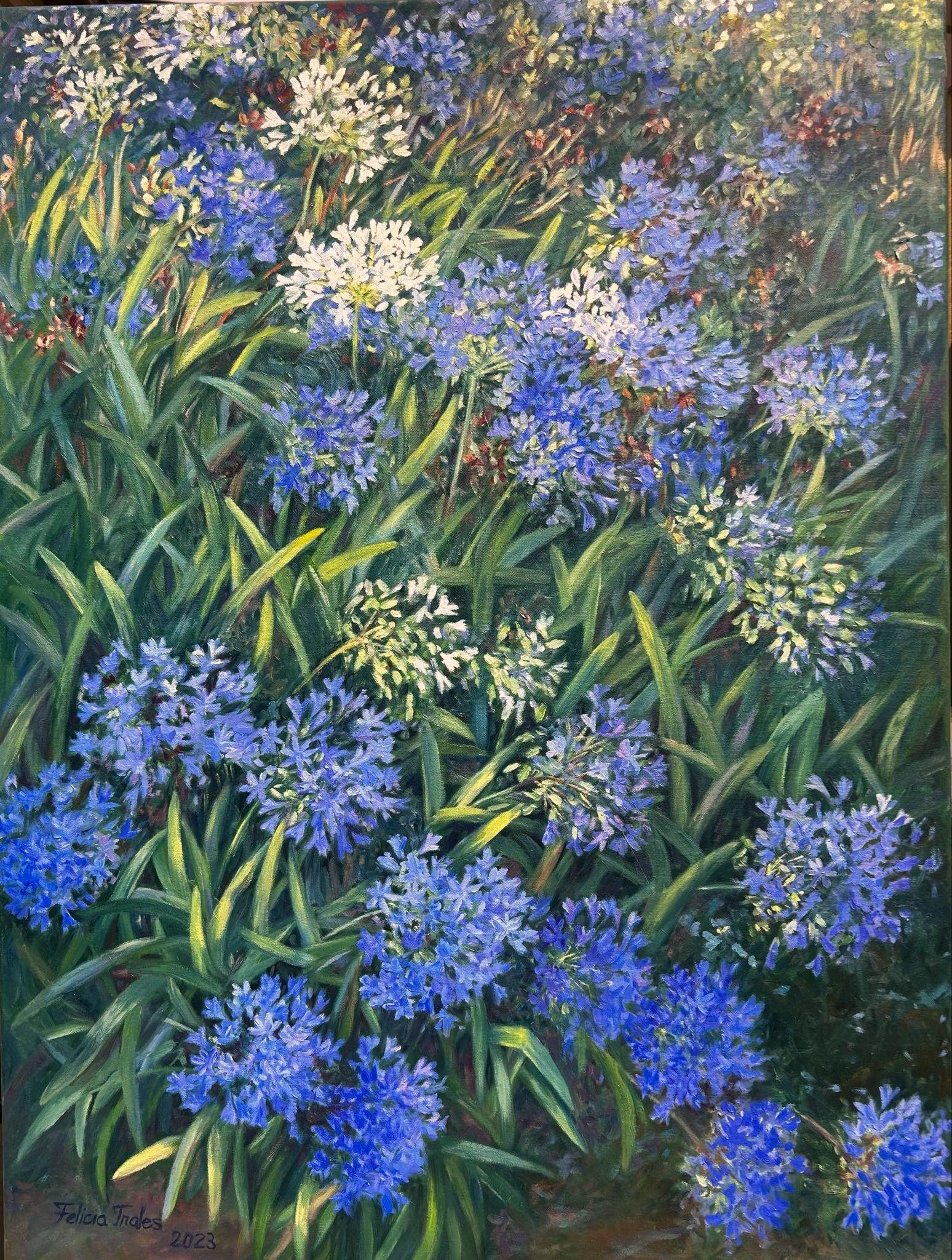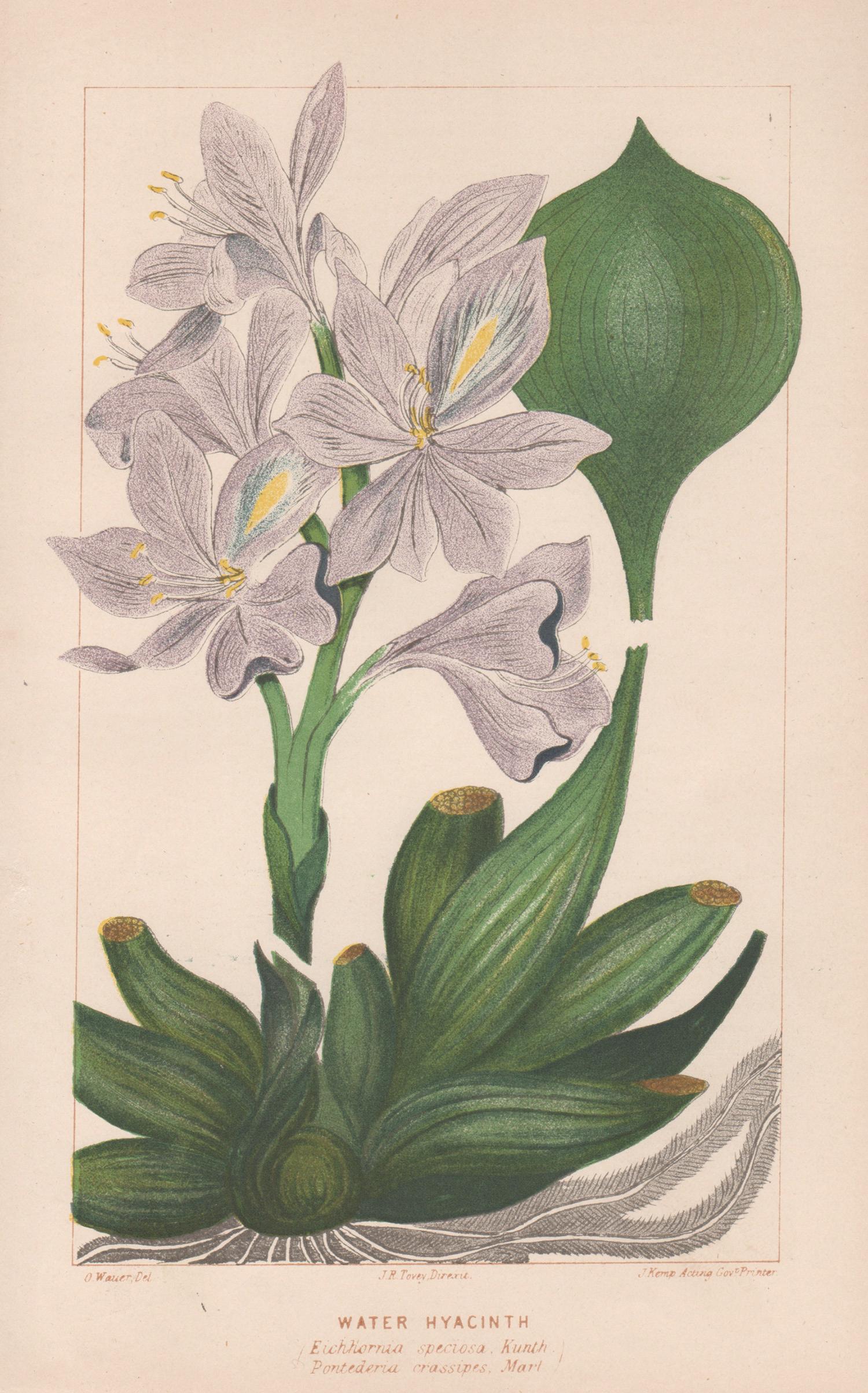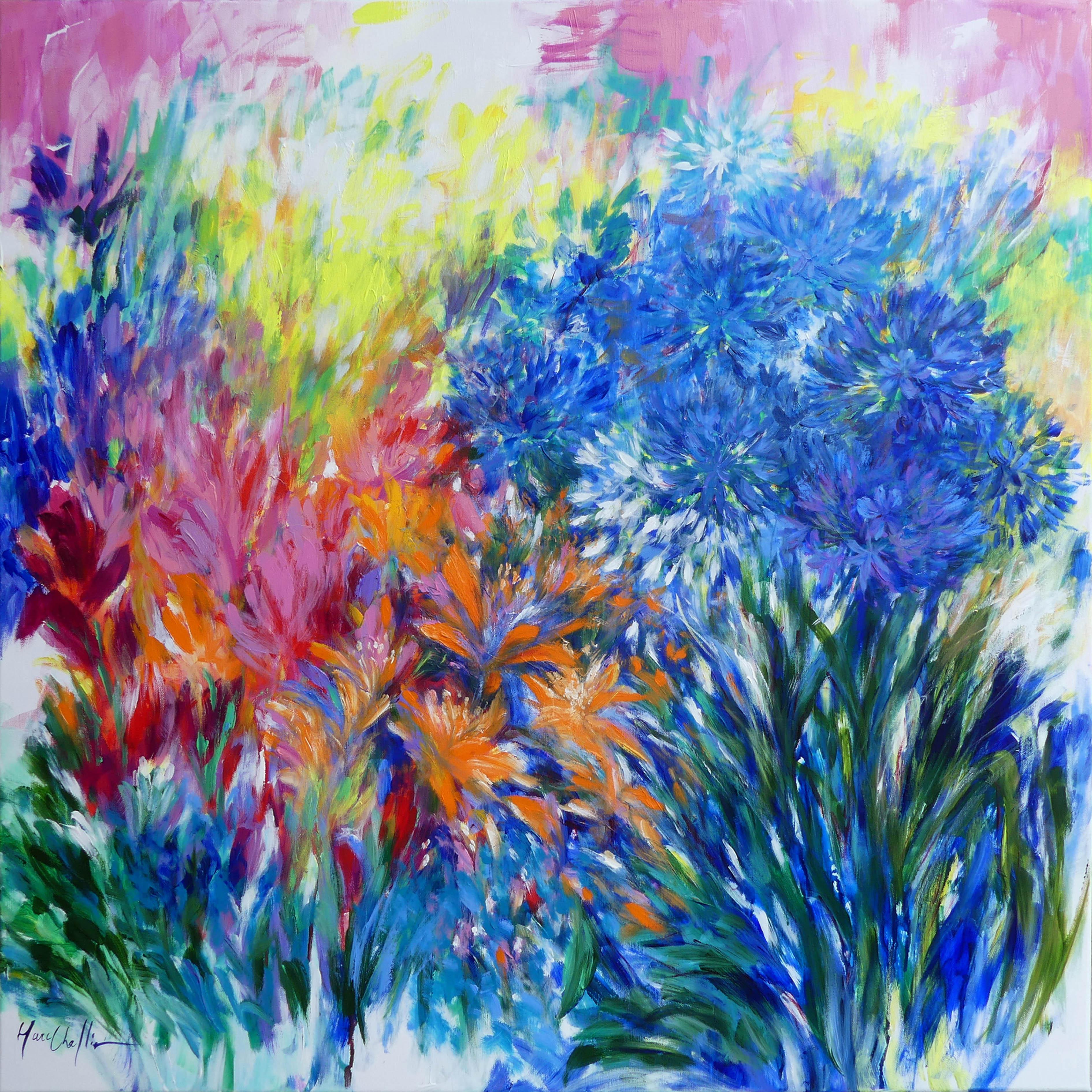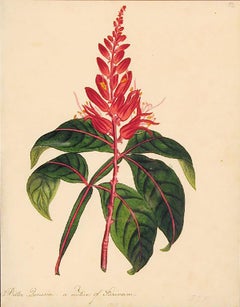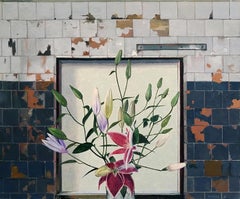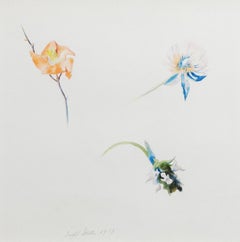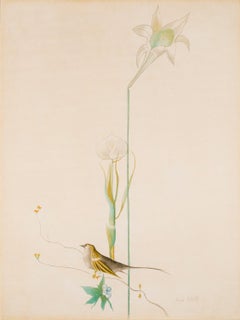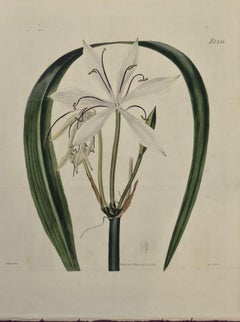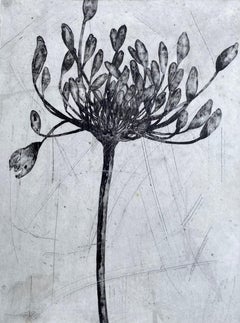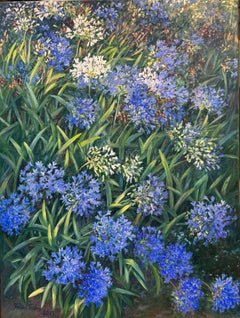Items Similar to African Agapanthus, or Blue Lily, a native of the Cape
Want more images or videos?
Request additional images or videos from the seller
1 of 3
Frances Jauncey KetchumAfrican Agapanthus, or Blue Lily, a native of the Cape1818-20
1818-20
$2,500
£1,897.96
€2,170.86
CA$3,492.86
A$3,884.83
CHF 2,028.54
MX$47,274.20
NOK 25,907.49
SEK 24,296.66
DKK 16,201.95
Shipping
Retrieving quote...The 1stDibs Promise:
Authenticity Guarantee,
Money-Back Guarantee,
24-Hour Cancellation
About the Item
Signed (at lower right): FJK
- Creator:Frances Jauncey Ketchum (1800 - 1832)
- Creation Year:1818-20
- Dimensions:Height: 8.7 in (22.1 cm)Width: 6.7 in (17.02 cm)Depth: 1.5 in (3.81 cm)
- Medium:
- Movement & Style:
- Period:
- Condition:
- Gallery Location:New York, NY
- Reference Number:Seller: APG 5816.0331stDibs: LU236723712
About the Seller
5.0
Recognized Seller
These prestigious sellers are industry leaders and represent the highest echelon for item quality and design.
Established in 1952
1stDibs seller since 2010
35 sales on 1stDibs
Typical response time: 3 hours
Associations
Art Dealers Association of America
- ShippingRetrieving quote...Shipping from: New York, NY
- Return Policy
Authenticity Guarantee
In the unlikely event there’s an issue with an item’s authenticity, contact us within 1 year for a full refund. DetailsMoney-Back Guarantee
If your item is not as described, is damaged in transit, or does not arrive, contact us within 7 days for a full refund. Details24-Hour Cancellation
You have a 24-hour grace period in which to reconsider your purchase, with no questions asked.Vetted Professional Sellers
Our world-class sellers must adhere to strict standards for service and quality, maintaining the integrity of our listings.Price-Match Guarantee
If you find that a seller listed the same item for a lower price elsewhere, we’ll match it.Trusted Global Delivery
Our best-in-class carrier network provides specialized shipping options worldwide, including custom delivery.More From This Seller
View AllBitter Quassia, a native of Surinam
By Frances Jauncey Ketchum
Located in New York, NY
Signed (at lower right): FJK
Category
Early 19th Century American Realist Still-life Drawings and Watercolors
Materials
Watercolor
Lilies
By John Moore
Located in New York, NY
Signed and dated (at lower right): MOORE 21
Category
2010s Contemporary Still-life Paintings
Materials
Oil
$24,000
Three Flowers
By Joseph Stella
Located in New York, NY
Joseph Stella was a visionary artist who painted what he saw, an idiosyncratic and individual experience of his time and place. Stella arrived in New York in 1896, part of a wave of ...
Category
20th Century American Modern Still-life Drawings and Watercolors
Materials
Paper, Crayon
Lily and Bird
By Joseph Stella
Located in New York, NY
Silverpoint and colored pencil on paper, 29 x 23 in.
Signed (at lower right): Joseph Stella
Executed about 1919
EXHIBITED: Hirschl & Adler Galleries, New York, November 23, 1985–January 4, 1986, American Masterworks on Paper: Drawings, Watercolors, and Prints, pp. 6, 46 no. 47 illus. // (probably) Richard York Gallery, New York, October 5–November 17, 1990, Joseph Stella: 100 Works on Paper, no. 36
EX COLL.: [Dudensing Galleries, New York]; sale, Christie’s, New York, December 7, 1984, lot 324; [Hirschl & Adler Galleries, New York, 1984]; to private collection, 2006 until the present
An independent-minded artist who adhered to the credo “Rules don’t exist,” Joseph Stella explored a range of styles, media, and themes, willfully ignoring the “barricades erected by ... [the] self-appointed dictators” of the art establishment (Joseph Stella, “On Painting,” Broom 11 [December 1921], pp. 122–23; Joseph Stella, “Discovery of America: Autobiographical Notes,” Art News 59
[November 1960], p. 41). By doing so, he produced a diverse and highly eclectic body of work, ranging from realist figure subjects, pulsating Futurist cityscapes, and modernist religious...
Category
Early 20th Century American Modern Animal Drawings and Watercolors
Materials
Paper, Color Pencil
Garden Flowers
By Charles Demuth
Located in New York, NY
Charles Demuth was one of the most complex, talented, and deeply sensitive artists of the American modern period. Whether he was painting floral still lifes, industrial landscapes, or Turkish bathhouses, art was, for Demuth, fraught with personal meaning. A fixture of the vanguard art scene in New York, Demuth navigated the currents of Modernism, producing some of the most exquisite watercolors and original oil paintings in twentieth-century American art.
Demuth was born in Lancaster, Pennsylvania, the only child of a well-to-do family. He had an awkward and introverted childhood shaped by a childhood illness, Perthes, a disease of the hip that not only left him permanently lame, but, as part of the “cure,” bedridden for two years in the care of his mother. This long period of incapacitation had a deep impact on Demuth, who came to see himself as an invalid, an outsider who was different from everyone else. It was perhaps during this period of indoor confinement that his keen interest in art developed. Several relatives on his father’s side had been amateur artists, and, following his convalescence, his mother encouraged his artistic pursuits by sending him to a local painter for instruction. The majority of his early pictures are of flowers, a subject for which Demuth maintained a lifelong passion.
Following high school, Demuth enrolled at the Drexel Institute of Art in Philadelphia, a school renowned for its commercial arts program. He advanced through the program rapidly, and, in 1905, at the encouragement of his instructors, he began taking courses at the Pennsylvania Academy of the Fine Arts. The two leading teachers then at the Academy were William Merritt Chase and Thomas Anshutz. Anshutz, himself a former student of Thomas Eakins, was well liked by his students, and is best known as the teacher of Robert Henri, John Sloan, and several of the other artists of the Ashcan School. Demuth, too, adopted a similar idiom, working in a controlled, realistic manner while at the Academy, where he remained until 1910.
In 1907, Demuth made his first trip to Europe, staying in Paris. He spent time on the periphery of the art scene composed of the numerous American artists there, including John Marin and Edward Steichen. He returned to Philadelphia five months later, and immediately resumed courses at the Academy. Despite his introduction to advanced modern styles in Europe, Demuth’s work of this period retains the academic style he practiced before the trip. It wasn’t until he had summered at New Hope, Pennsylvania, in 1908 and 1911, that his style began to evolve. New Hope was a prominent American Impressionist art colony whose members were largely affiliated with the Pennsylvania Academy. Demuth dropped the conservative tone of his style and adopted a freer and more colorful palette.
Although he remained based in Philadelphia, Demuth frequently went to New York during this period. Many of the same American artists of the Parisian art scene Demuth had encountered on his earlier European trip now formed the nucleus of New York’s avant-garde, which centered around Alfred Stieglitz’s 291 gallery. It wasn’t long before Demuth began to apply modernist-inspired strategies to his work. He was particularly influenced by the watercolor work of John Marin, also a former student of Anshutz, whose bold use of color in the medium Demuth freely adapted into looser washes of color.
In 1912, Demuth again left for Paris, this time studying in the Académie Moderne, Académie Colorossi, and Académie Julian. In Paris Demuth met the American modernist Marsden Hartley. Hartley, a principal figure in the expatriate art circle, acted as a mentor to Demuth, and introduced him to the wide array of modern styles currently practiced in Europe. Hartley also introduced Demuth to many of the members of the Parisian avant-garde, including Gertrude Stein. Demuth was an aspiring writer, and he spent many hours in conversation with Stein. He wrote extensively during this period, and published two works shortly after his return to America. He also developed an interest in illustrating scenes from literary texts. From 1914 to 1919, Demuth produced a series of watercolors of scenes from books such as Emile Zola’s Nana and Henry James’s The Turn of the Screw.
Upon his return to America, Demuth settled in New York. In 1914, Demuth had his first one-man show at Charles Daniel’s gallery, which promoted emerging modern American artists, including Man Ray, Rockwell Kent, Yasuo Kuniyoshi, Stuart Davis, and Max Weber. Demuth drew closer to the artistic vanguard in New York, becoming friends with many in the Stieglitz and Daniel circles, including Georgia O’Keeffe, Marcel Duchamp, Carl Van Vechten, and Edward Fiske.
New York’s cosmopolitan atmosphere and active nightlife appealed greatly to Demuth. In a sketchy style well suited to watercolor, he painted many vaudeville and circus themes, as well as nightclub, café, and bathhouse scenes. Often with Duchamp, Demuth took part in an urban subculture replete with nightclubs, bars, drugs, and sexual permissiveness, which, for a homosexual artist like himself, allowed room for previously unattainable personal expression. Demuth’s pictures of sailors, bathhouses, and circus performers embody a sensual and sexual undercurrent, expressing the artist’s sense of comfort and belonging in the bohemian subculture of New York.
Simultaneously, Demuth deepened his interest in floral pictures, painting these almost exclusively in watercolor. His style evolved from the broad color washes of his earlier pictures to more spare, flattened, and sinuous compositions, inspired by the drawings of Aubrey Beardsley and other artists of the Aesthetic Movement. Demuth’s flower watercolors are moody and atmospheric, sensuous and elegant, introspective and yet full of expressive power. Moreover they are beautiful, and are unequivocally among the finest still lifes in American art. Despite numerous subsequent artistic undertakings that led him in a variety of directions, Demuth never stopped painting flower pictures, ultimately adding fruits and other still-life objects to his repertoire.
In 1916, Demuth began to develop a style later known as Precisionism, a form of landscape painting infused with Cubism, in which space is divided into precisely drawn geometric regions of color. Demuth first began to paint the landscape in an appropriated Cubist mode while on a trip with Hartley to Bermuda. In these early landscapes, in which the curvilinear forms of trees intersect the geometrically articulated architectural forms, Demuth explored ideas that shaped the future development of modernism in America.
The full realization of Demuth’s explorations came after his return to America in 1917, when he turned his attention to industrial subjects. These works derive from a “machine aesthetic,” espoused by New York artists such as Francis Picabia, Joseph Stella, Albert Gleizes, and Duchamp, by which artists viewed machines as embodying mystical, almost religious significance as symbols of the modern world. Rather than painting the skyscrapers and bridges of New York as did most of his like-minded contemporaries, Demuth returned to his home town of Lancaster, where he painted factories and warehouses in a Precisionist idiom. The titles for these pictures are often contain literary references, which serve as clues for the viewer to aid in the decoding of the artist’s meaning.
In 1923, Demuth planned a series of abstract “poster portraits” of his friends and contemporaries in the New York art and literary scene. In these “portraits,” Demuth combined text and symbolic elements to evoke the essential nature of his sitters’ distinguishing characteristics. In this fashion, he painted portraits of such artists as Georgia O’Keeffe, John Marin, and Arthur Dove. His most famous poster portrait, I Saw the Figure 5 in Gold...
Category
20th Century American Modern Still-life Drawings and Watercolors
Materials
Paper, Watercolor
Hydrangeas and Other Garden Flowers
By John Ross Key
Located in New York, NY
Signed (at lower right): John Ross Key 1882
Category
Late 19th Century American Realist Still-life Paintings
Materials
Canvas, Oil
You May Also Like
Flowering Crinum Plant: A 19th C. Hand-colored Botanical Engraving by Curtis
By William Curtis
Located in Alamo, CA
This early 19th century hand-colored double fold-out botanical engraving is entitled "Crinum Arenarium" (Water-Island Sand Crinum), plate 2355, published in London in 1822 in William...
Category
1820s Naturalistic Still-life Prints
Materials
Engraving
Charlie Davies, Agapanthus, Limited Edition Floral Print, Affordable Art
By Charlie Davies
Located in Deddington, GB
Agapanthus [2021]
Limited Edition
Flowers
Soft Etching
Edition number 100
Image size: H:29.5 cm x W:29.5 cm
Complete Size of Unframed Work: H:50 cm x W:50 cm x D:0.1cm
Sold Unframed
...
Category
21st Century and Contemporary Contemporary Still-life Prints
Materials
Paper, Etching
Agapanthus
Located in New Orleans, LA
Brought up in the foothills of the Rocky Mountains of Colorado, Heidi Jung as an artist has naturally been drawn to a subject matter most timeless and familiar to her.Through draught...
Category
2010s Naturalistic Landscape Paintings
Materials
Charcoal, Sumi Ink, Wood Panel, Pastel, Acrylic
Price Upon Request
African Lily, Painting, Oil on Canvas
Located in Yardley, PA
In this oil work, I captured the vibrancy and brilliance of wildflowers, evoking the very essence of nature. The figurative style infused with impressionism allows texture and light ...
Category
2010s Impressionist Paintings
Materials
Oil
Water Hyacinth, antique botanical plant lithograph
Located in Melbourne, Victoria
'Water Hyacinth'
Colour lithograph, 1909.
Category
Early 20th Century Naturalistic More Prints
Materials
Lithograph
Blue agapanthus and hemerocallis, Original paintings, Spring, Abstract
By Mary Chaplin
Located in Deddington, GB
Blue agapanthus and hemerocallis, acrylic on linen canvas This painting by the artist Mary Chaplin is a vision of summer in her Normandy garden. The artist cultivates her flowers and...
Category
2010s Contemporary Still-life Paintings
Materials
Canvas, Acrylic
More Ways To Browse
African American Antique
Antique Native American Painting
African American 19th Century
Brown And Black Painting
Love Me Art
London Landscape Painting
Silver Gelatin Signed
Gestural Abstract Art
Glamour Art
Painting Elegant
Passionate Art
Old Photographs
Paper Press
Black And White Framed Photographs
The Young Painter
Used Oil Pastels
Picasso Picasso Picasso Prints
City Of Paris Painting
